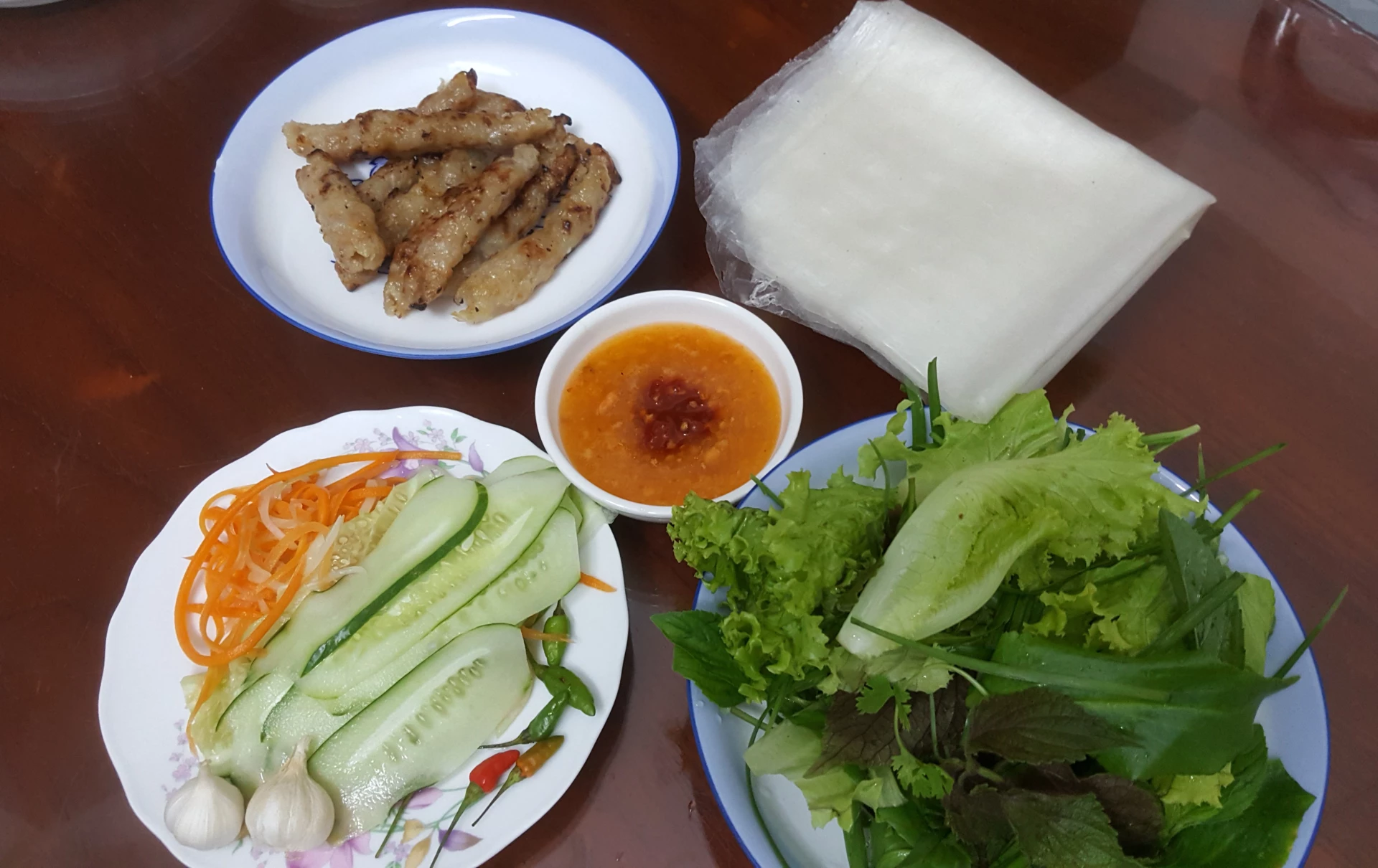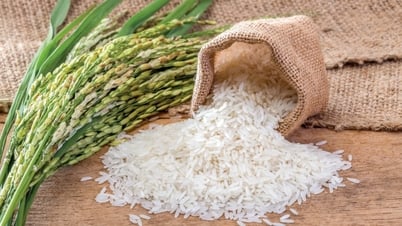When I was a child, I loved to follow my mother to the market to sell sugar. I sat behind the stall, watching the bustling traders, carrying bags in their hands, talking and laughing loudly. The narrow stalls, on high stalls or with plastic sheets spread on the ground, or cardboard on the ground, everyone, regardless of the sun, rain or storm, squeezed every penny, smoothed the dirty, crumpled bills, folded them neatly, put them in bags, saving for life.
When I grew up a little, my mother returned home and opened a grocery store, no longer selling at the market but still cooking sugar, later making green rice flakes and popcorn to sell at the market. In the mornings, I helped my mother and sister deliver goods to the market, in the afternoon I carried a basket to collect money, see what people needed, write it down in a book and bring it to them the next day. As the years passed, I got to know most of the women at the sugar, bean and candy stores, so Dinh Market became a part of me, like the flow of my hometown in my memories.
 |
| Photo: GC |
Every time I come back to visit, I always stop by a few restaurants first. Aunt Truc and Aunt Mai's porridge stall is always a familiar place. She sells all day, the porridge is always steaming. Aunt Truc sits and cuts the intestines, Aunt Mai scoops the porridge into a bowl and slowly hands it to a familiar customer who has not forgotten the taste for many years. The bowl of porridge is placed on the table, sprinkled with a little pepper and fragrant green onions and cilantro, a plate of intestines, a bowl of fish sauce and a bunch of vegetables on the side. Scoop a spoonful, the porridge tastes sweet and soft. Pick up a piece of intestine, dip it in fish sauce, and chew it. The liver is rich and fatty...
Next door is a Ninh Hoa specialty duck rice stall. The rice is cooked with duck broth so the fat seeps into each plump grain of rice. Crispy rice is not always available. You have to wait for an hour, the fire catches the pot, burning the layer of rice soaked in fat until it turns golden brown and becomes crispy. The owner scoops two ladles of lean rice, scoops the crispy rice to one side, sprinkles with chopped onions, cilantro and Vietnamese coriander, and picks up some pickles. Then she uses a knife to cut off the intestines, liver, gizzard, and chops the thigh meat and puts it on another plate. Pick up a piece of meat and dip it in fish sauce, feel the fatty skin, the young, tender, juicy meat, the spicy, sour fish sauce, and the warm ginger aroma. The rice plate is soon gone.
The spring roll stall in front of the duck rice stall is steaming hot. Ninh Hoa grilled spring rolls are made from fatty, thinly sliced meat and tendons, minced with spices in a stone mortar. Some people wrap spring rolls around chopsticks, others roll them into balls, press them, and grill them. I think without the crispy sound of spring rolls, spring rolls will lose their uniqueness. Thin rice paper is cut into eight pieces, wrap a tiny shrimp and green onion inside, fry until golden brown then take them out. A basket of fresh green vegetables includes: lettuce, herbs, white basil, perilla, fish mint, along with chopped cucumber, thinly sliced sour mango or star fruit. Soy sauce for spring rolls is the secret of Ninh Hoa people. Soak sticky rice until soft, then pound it, mix the sticky rice in cold water, remove the shrimp color, put it on the stove and stir well. When the sticky rice is cooked and seasoned, beat the colored seeds, filter the water and mix it into the soy sauce to get a red and yellow color. When a customer orders spring rolls, the owner quickly takes rice paper, adds some vegetables, melon, mango, puts in some spring rolls, takes chopped grilled spring rolls, and rolls them lightly. Hold the spring roll, dip it in soy sauce, take a bite, feel the rice paper mixed with chewy noodles, hot grilled spring rolls soaked in sweetness, combined with crispy spring rolls, a little sourness from mango, spiciness from chili, coolness from cucumber and especially the thick, sweet, salty soy sauce.
The dessert stall of Ms. Nguyet next door changes every day. The tapioca pudding with peanut or mung bean filling is both chewy and rich. The pot of sweet bean pudding is fragrant and rich. Or stop by the xu xa, xu xoa, and hot dat stall of the girl in the old neighborhood next door, order a glass of caramelized sugar water, with some crushed ice on top, and feel the coolness of the homeland all over your body.
The old women still work hard in the market to preserve the taste and aroma of the porridge pot, the pancake plate, the fish noodle bowl associated with their name. Some have returned to the earth, leaving behind a void that can never be filled even if the younger generation takes over. Now that the supermarket is cool and air-conditioned, and squatter markets have sprung up in every corner, Dinh Market has almost become a wholesale market. It was bustling early in the morning and then deserted, which is pitiful.
Standing among the hustle and bustle of the morning, somewhere I suddenly found my figure, the little boy sitting quietly in his mother's lap in the corner of the market.
NGUYEN HUU TAI
Source: https://baokhanhhoa.vn/van-hoa/sang-tac/202508/ra-cho-ma-coi-7117872/



![[Photo] Prime Minister Pham Minh Chinh chairs the conference to review the 2024-2025 school year and deploy tasks for the 2025-2026 school year.](https://vphoto.vietnam.vn/thumb/1200x675/vietnam/resource/IMAGE/2025/8/22/2ca5ed79ce6a46a1ac7706a42cefafae)

![[Photo] President Luong Cuong attends special political-artistic television show "Golden Opportunity"](https://vphoto.vietnam.vn/thumb/1200x675/vietnam/resource/IMAGE/2025/8/22/44ca13c28fa7476796f9aa3618ff74c4)
![[Photo] President Luong Cuong receives delegation of the Youth Committee of the Liberal Democratic Party of Japan](https://vphoto.vietnam.vn/thumb/1200x675/vietnam/resource/IMAGE/2025/8/22/2632d7f5cf4f4a8e90ce5f5e1989194a)







![[E-Magazine]: That place is so passionate that it makes your heart flutter](https://vphoto.vietnam.vn/thumb/402x226/vietnam/resource/IMAGE/2025/8/22/ac7c83ddf6dc43a49a177f8f8bc2262d)

















































































Comment (0)